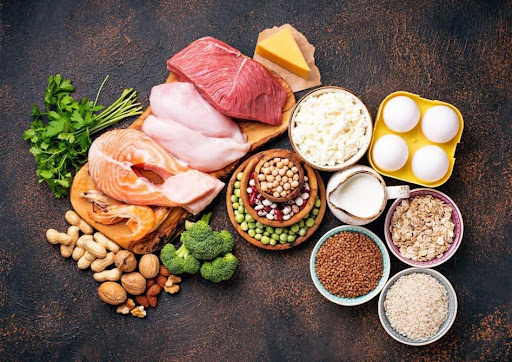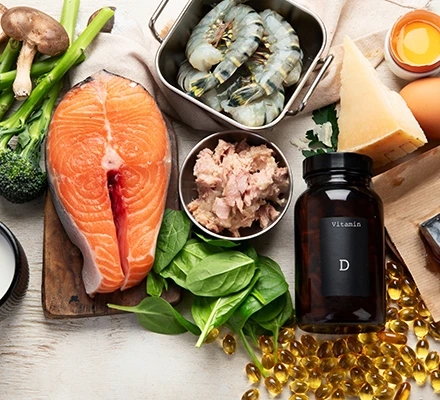Frailty refers to a person’s mental and physical resilience, or their ability to bounce back and recover from events like illness and injury.
As we age our bone density reduces and our bodies find it harder to build and keep muscle.
But frailty is not inevitable.
What can I do about frailty?
There are 3 areas in our lifestyle that we know can help to reduce frailty.
Exercise
Regular exercise, especially resistance exercise (strength) helps to build and preserve muscle to support strength and balance. It also helps to preserve bone mass which keeps them stronger. If you are unsure how to increase your activity levels, you may want to speak to a personal trainer or physiotherapist for support.
Social interaction
Having social hobbies, gathering with friends and eating with other people are great ways to keep your mind and body active.
Diet
Eating enough protein, staying a healthy weight and including good sources of calcium and vitamin D in your diet promote healthy bones and muscles. The body becomes less efficient at using nutrients as we age, so you may need more of something to get the right results.
Protein
We need protein to build muscle. It’s really important to do regular exercise that use your muscles, As we age, the body becomes less efficient at using protein.
Studies show that people over the age of 70 benefit from eating at least 1g of protein for kilogram of body weight each day and around 1.5g per kilogram if you are unwell or recovering from illness.
This is more than younger people.
For example:
If you weigh 70kg, you should aim to eat at least 70g protein a day and up to Note: if you are overweight, you should use your ideal body weight for this calculation.
“Muscle loss increases from around the age of 40 at a rate of about 0.5-1% per year.”

Most of our protein comes from meat, chicken, fish, egg, dairy, pulses, nuts and legumes.
Ideas
| Food |
Protein (g) |
| 100g (4oz) chicken breast |
29 |
| 1 Salmon fillet (130g or 5oz) |
23 |
| 100g (4oz) 15% fat minced beef |
21 |
| 25g (1oz) slice of ham |
4 |
| ½ can (200g) baked beans |
11 |
| 100g (4oz) cooked puy lentils |
11 |
| 70g garden peas |
4 |
| 50g hummus |
3 |
| 125g plain yogurt |
5 |
| 125g high protein yogurt (e.g. Skyr) |
13 |
| 200ml cow’s milk |
7 |
| 30g cheddar cheese |
7 |
| 1 medium egg |
6 |
| 25g nuts |
5 |
| 2tsp peanut butter |
3 |
Bone Health
“If calcium is the building block of bones, think of vitamin D as the cement.”
Bone contains 99% of the body’s Calcium. Vitamin D is needed for the body to absorb Calcium.
Our bone mass peaks at around the age of 25.
Low muscle mass, menopause and low vitamin D all contribute to bone loss. In fact, having a low Vitamin D can reduce Calcium absorption by 10-15%!
Where can I get my Vitamin D
We get some of our vitamin D from sunlight. Good dietary sources include oily fish, red meat, liver, egg yolks and fortified foods like some breakfast cereals and margarines.

Because it is difficult to get enough Vitamin D from our diet The Department of Health recommend that we all take 10mcg Vitamin D per day during the winter months when we can’t get it from the sun. But if you spend a lot of time indoors or cover most of your skin when outdoors, you should take it all year round.
Calcium
The recommended calcium intake for adults is 700mg per day but if you have osteoporosis you may be advised to have more like 1000mg pre day.
Dairy foods like milk, yogurt and cheese are excellent sources of calcium, and if you eat these regularly, it shouldn’t be hard to get enough calcium. If you don’t eat dairy, try a calcium fortified plant-based alternative like soya or oat milk.
Fortified foods also play and important role and if you are struggling to eat enough, you can add a Calcium supplement to your routine.
Ideas
Calcium Content in Common Foods
| Food |
Calcium (mg) |
| 200ml cow’s milk (or a calcium fortified alternative) |
240 |
| 125g yogurt (or a calcium fortified alternative) |
180 |
| 30g cheddar |
220 |
| 200g rice pudding (a small can) |
198 |
| 30g milk chocolate |
70 |
| 30g calcium fortified cereal |
150 |
| 1 slice calcium fortified bread |
150 |
| 60g tinned sardines (with the bones left in) |
300 |
A suggested meal plan for an anti-frailty diet
Breakfast:
A calcium fortified cereal with cow’s milk
Mid morning:
A bit of milk chocolate with a hot drink
Lunch:
Baked beans on a slice of calcium-fortified bread for toast (with vitamin D fortified margarine) topped with grated cheese
A high protein yogurt topped with nuts
Mid afternoon:
Crackers or breadsticks with cheese or hummus
Dinner:
A small chicken breast with garden peas and a few new potatoes (with melted vitamin D fortified margarine)
Supper:
Peanut butter on a calcium fortified slice of toast or cheese and crackers
This information sheet was produced by Rachel Vallis Dietetic Consultancy for the staff and clients of Arbour Companions and Care.
Rachel is a Registered Dietitian with 20 years experience in the NHS and private sectors. She accepts clinician and self-referrals for a wide range of conditions.
Contact Details
Rachel Vallis BSc RD
Dietitian
W: www.rachelvallis.com
E: rachelvallis@gmail.com
M: 07736285774
Author – Rachel Vallis BSc RD.
| 








